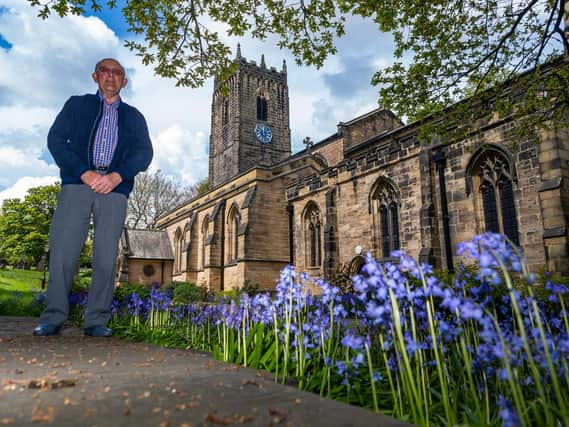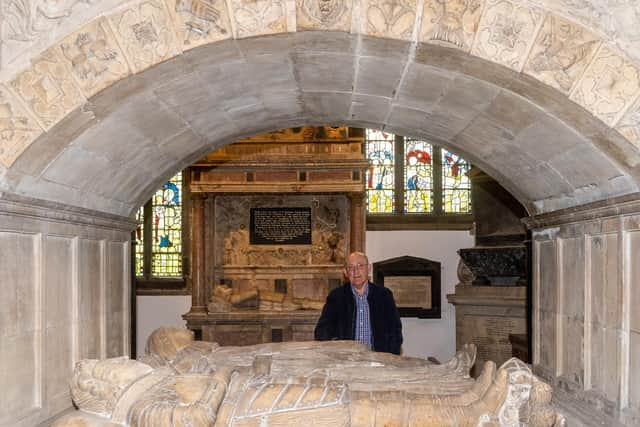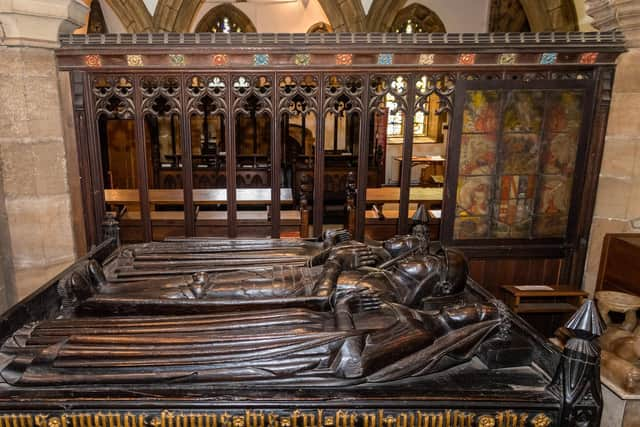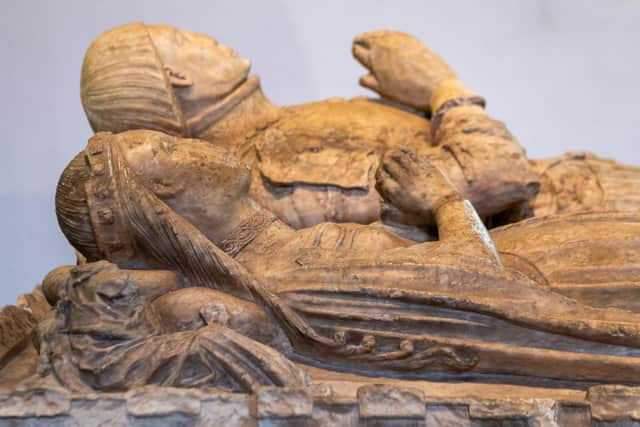Ancient treasures at Yorkshire parish church restored to glory following 20 years of conservation work


Now finally, following 20 years of restoration, there comes a time to truly celebrate their splendour.
Conservation work had begun with a memorial, coming away from a wall, with another one's columns too loose to aid its support.
Advertisement
Hide AdAdvertisement
Hide AdThese are ancient monuments, of global acclaim, and in tribute to one of Yorkshire's most significant families.


Over two decades the church has sought funding in grant after grant, to conserve the future of its "embarrassment of riches".
For Kieran Elliott, one of the conservators, this project stands out as a highlight of his 30 year career.
"They are incredibly important," he said. "Some are acknowledged for their craftsmanship to be of far greater importance than many of the greatest museums."


Advertisement
Hide AdAdvertisement
Hide AdThe Grade l listed Thornhill Parish Church is first mentioned in the Domesday Book of 1086, but fragments from Anglo-Saxon memorials hint at a much older existence.
It is believed a church has stood here since at least the 9th century, as indicated by ancient crosses and runic burial stones, with the Savile Chapel built in 1447.
It is home to historically important family tombs and monuments, and a Medieval stained glass collection said to be the best outside of York, together creating a unique ensemble.
Since the late 14th century its history has been associated with that of the significant Savile family, linked to politics and Royalty and military acclaim.


Advertisement
Hide AdAdvertisement
Hide AdBrian Pearson, chairman of the church's fabric committee, is the man behind securing untold sums in funding over the years, from bodies such as the Heritage Lottery Fund, English Heritage and Churchcare, and specialist grant trust.
Hidden treasures
It is impossible, he said, to know which monument would be among its most famous.
"The oldest are the Runic stones found in the graveyard, with people travelling from all over the world to see them," he said.
Some would say the greatest treasure here is an alabaster monument to Sir John Savile, which was attacked in the Civil War, and became the hiding place for Anglo Saxon grave slabs and cartoons of the East Window.
Advertisement
Hide AdAdvertisement
Hide AdOne stone monument sees an effigy of a knight in chainmail, thought to be Sir John de Thornhill and dating from around 1322, with his feet upon a dog to represent fidelity.
Still more would argue over a rare oak tomb chest, once loaned to the Victoria and Albert Museum as part of a Medieval art exhibition, and made to honour Sir John Savile, who died in 1504.
'Of national importance'
For conservator Mr Elliott, Thornhill's prize piece is in a monument to Sir George Savile, dated 1642, made by King James' sculptor Maximilan Colt, and the only of its kind in the North.
"To have the royal tomb maker, someone so important, design and craft a monument in a parish church is really significant," said Mr Elliott. "What we were working on was beautiful.
Advertisement
Hide AdAdvertisement
Hide Ad"It's something of national importance, something of such significance, and right on the doorstep."
Restoration first began some 20 years ago, as Colt's memorial began to come loose from the wall. Then a Renaissance Monument was deemed unsafe, with its supporting columns turning freely.
Conservators, dismantling supports, found some were on the verge of collapse, with the Colt monument taken right down to its base to clean the thousands of pieces. Over the course of two decades each has now been carefully rebuilt, saving the monuments from pollution and moisture for generations to come, with air gaps built into supports to ensure their protection.
Reopening
Now, following a long period of closure, the church is tentatively opening up again, with the first school classes returning on history trips. In September, the last of the Medieval windows will be returned to its place after conservation.
Advertisement
Hide AdAdvertisement
Hide Ad"Generations of school children have been to the church to see the history of their village expressed through these monuments," said Mr Pearson.
"We need to keep that interest going for this generation.
"It is true to say that even so people do not really appreciate the treasures we have," he added.
"They are important links to the whole history of the area and the important people - the Saviles and Thornhills who placed them there when Thornhill was a very small village."
_______________________________________
Support The Yorkshire Post and become a subscriber today. Your subscription will help us to continue to bring quality news to the people of Yorkshire. In return, you'll see fewer ads on site, get free access to our app and receive exclusive members-only offers. Click here to subscribe.
